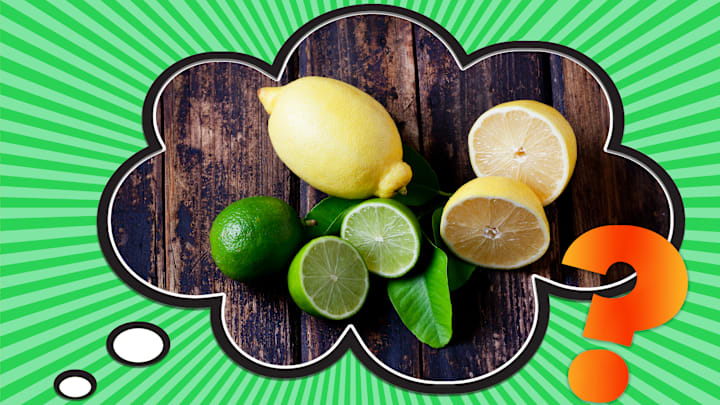Lemons and limes are both citrus fruits, and their juice and zest are often used interchangeably in recipes. So why do lemons (and most fruits) have seeds while limes don’t?
Hybrid vs. True Limes
The majority of limes sold in the U.S. are Persian limes (Citrus latifolia). While often thought to be its own species, according to the Los Angeles Times, this fruit is “a natural hybrid of true lime and citron.” Also called Tahiti or Bearss limes, these limes are parthenocarpic, meaning they’re produced without fertilization and are thus seedless. On the other hand, true limes (Citrus aurantifolia, but known commonly as Mexican, Key, or West Indian limes) do have seeds.
Because Persian limes are bigger, have a thicker skin, and are more resistant to diseases than true limes, they have a longer shelf life. But where do they come from if they don’t have seeds?
Unraveling the Mystery of Parthenocarpic Fruit
Despite buzz you may have heard around the internet, the reason that most limes don’t have seeds has nothing to do with GMOs (a.k.a. ”genetically modified organisms,” something whose DNA has been changed). In fact, seedless fruits are not a new phenomenon.

As two biologists at Brookhaven National Laboratory explained to Scientific American in 2000, normal fruit starts to develop when a flower’s egg cell is fertilized by pollen. Parthenocarpic fruit, in contrast, develops without fertilization. Fruit can be parthenocarpic for a variety of reasons, such as problems with the eggs or sperm, problems with pollination, or chromosomal imbalances.
Seedless or “large-fruited” limes have three sets of chromosomes rather than two. While some parthenocarpic fruits occur naturally, this genetic abnormality makes wild reproduction extremely rare for Persian limes. To overcome this, farmers use a technique called grafting, where part of a seedless lime tree is removed and inserted into a new tree. This essentially clones the original tree, ensuring that more seedless limes will be produced. (Farmers can also use grafting to fix fruit trees that have been injured.) Grafting allows farmers to produce seedless fruits on a commercial scale.
Spotting Seeds
While most limes you see in the supermarket are probably seedless, some varieties of lime do indeed have seeds. And although most lemons have seeds, some lemons are actually seedless. You may find an occasional seed even in “seedless” lemons due to cross-pollination if the lemons were grown near other fruits. Lemons without seeds are more difficult to find in grocery stores than regular ones, just as limes with seeds are harder to find in stores than their seedless counterparts.
Now that you know the answer to this citrusy mystery, get to the bottom of a few more food-based head scratchers—like whether a tomato is a vegetable or a fruit, the difference between shrimp and prawns, and what horseradish sauce is, exactly—and find out why we call defective cars “lemons.”
A version of this story ran in 2016; it has been updated for 2023.
